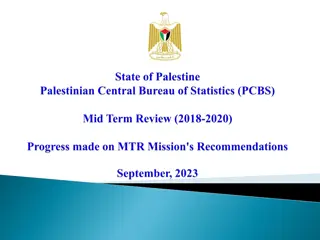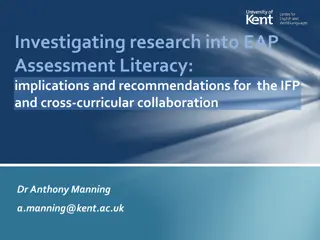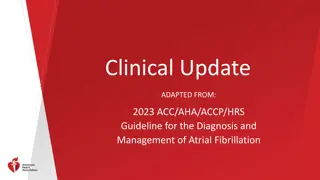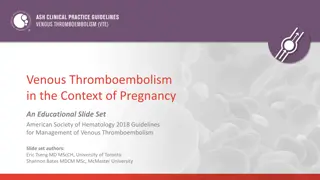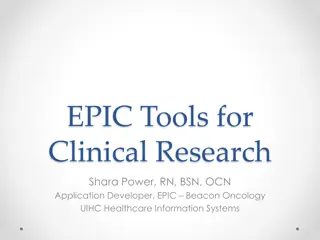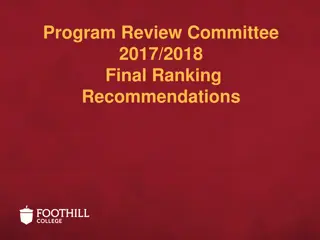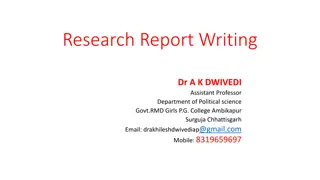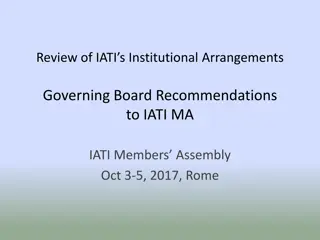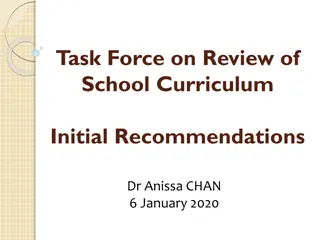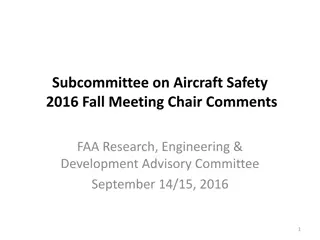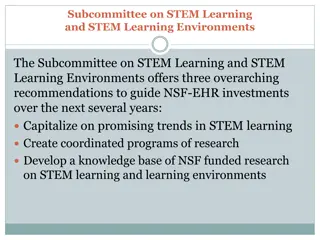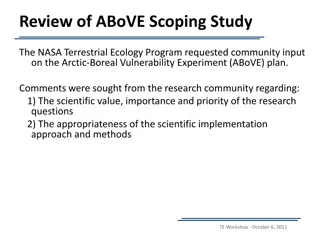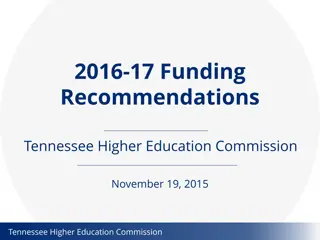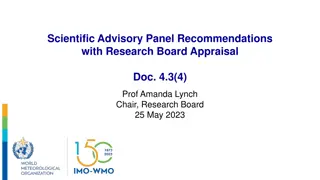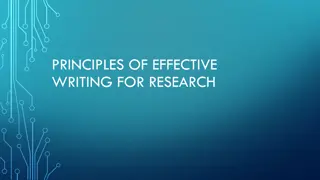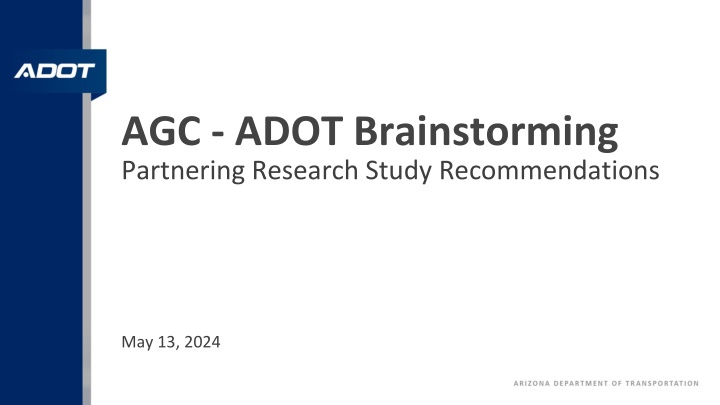
ADOT Partnering Research Study Findings and Recommendations
"Explore the findings and recommendations from a comprehensive research study on the effectiveness of ADOT's partnering program. Discover insights on stakeholder perceptions, impact on construction projects, effectiveness of the PEP, issue resolution, trust issues, and district-wise utilization. Gain valuable insights for enhancing ADOT's partnering initiatives."
Download Presentation

Please find below an Image/Link to download the presentation.
The content on the website is provided AS IS for your information and personal use only. It may not be sold, licensed, or shared on other websites without obtaining consent from the author. If you encounter any issues during the download, it is possible that the publisher has removed the file from their server.
You are allowed to download the files provided on this website for personal or commercial use, subject to the condition that they are used lawfully. All files are the property of their respective owners.
The content on the website is provided AS IS for your information and personal use only. It may not be sold, licensed, or shared on other websites without obtaining consent from the author.
E N D
Presentation Transcript
AGC - ADOT Brainstorming Partnering Research Study Recommendations May 13, 2024
Agenda Partnering Research Study June 2023 Study purpose and tasks Key study findings Study recommendations Next steps
Purpose and Tasks The purpose of the study was to assess the effectiveness of ADOT s partnering program Reviewed ADOT s internal partnering processes Reviewed other DOT partnering programs Conducted Interviews and Surveys Gathered findings and developed recommendations
Finding One Both internal and external stakeholders overall value the partnering approach as ADOT s way of doing business
Finding Two Does partnering have any impact, positive or negative, on the success of ADOT construction projects? Most participants across all groups said partnering has a positive impact. A smaller group said it has both positive and negative impacts. No participants said it has solely a negative impact.
Finding Three How effective is the PEP in promoting a successful partnership? n=102 The majority of respondents reported that PEP goals are effective (66%). Of those that did not find it effective, about 80% were ADOT/public sector participants and only 20% were contractors/consultants.
Finding Four During the course of a project, are partnering processes helpful in resolving issues and escalations? Most respondents reported that partnering processes are always, frequently or sometimes helpful in resolving issues/escalations.
Finding Five Distrust in partnering processes and outcomes (belief the program favors the other party) was a recurring theme among participants
Finding Six Do some ADOT districts use partnering more effectively than others? Most ADOT/public sector participants answered don t know to this question. The majority of contractors/consultants reported that some districts use partnering more effectively than others.
Finding Seven Do ADOT-hired Consultant Temp Techs effectively practice and carry-out partnering on the jobs? The majority of contractors/consultants reported that Consultant Temp Techs are only sometimes or rarely effective. ADOT respondents gave more positive responses about effectiveness of Consultant Temp Techs.
Finding Eight Do you factor in partnering positively or negatively when you price your bid on an ADOT project? About one in four contractors/consultants reported factoring partnering positively when bidding, but the majority don t factor it in or don t know if it is a factor. After excluding don t know responses, approximately 39% of firms reported factoring it positively.
Finding Nine Except for partnering in the precon projects, the partnering model is the same for all construction projects
Finding 10 Continuous learning and improvement Metrics PEP Industry feedback Close out/lessons learned Partnering Outreach
Recommendations 1. Increase program commitment and support within ADOT: Collect and share evidence of program impact Foster visibility of ADOT s top-down commitment to partnering Train ADOT Consultant Temp Techs on partnering effectiveness Evaluate ADOT Personnel on partnering effectiveness
Recommendations 2. Close gaps in program reach and stakeholder engagement: Update information about the program Ensure partnering orientation includes external stakeholders Ensure project-level partnering engagement by the right people at each stage of the project Engage external stakeholders in program changes, leadership and education
Recommendations 3. Improve partnering support and monitoring: Structure and enable ongoing engagement of partnering staff with project teams Modify PEP
Recommendations 4. Strengthen the issue escalation ladder: Reinforce appropriate issue escalation and resolution processes Track and share issue escalation information
Recommendations 5. Develop/enable adaptations for different circumstances: Consider an even more streamlined version of partnering in the precon for projects of limited complexity Expand access to partnering in the precon for small projects of limited complexity Offer models or guidance for scaling partnering to meet the needs of particularly large and complex projects
Recommendations 6. Adopt continuous learning and improvement strategies: Reestablish PEP tools that allow comparisons of standard rating questions over time, across projects, or by district Share program-level data and other data about program performance with internal and external stakeholders Create a mechanism for welcoming, routing, and responding to partnering program feedback on an ongoing basis (e.g., an online comment card)
Implementation Potential changes to ADOT s partnering program may involve trade-offs Discussions should include a broad set of internal and external stakeholders After priorities for program changes are determined, a detailed implementation plan may be developed that includes responsibilities, resource allocation, and timelines

